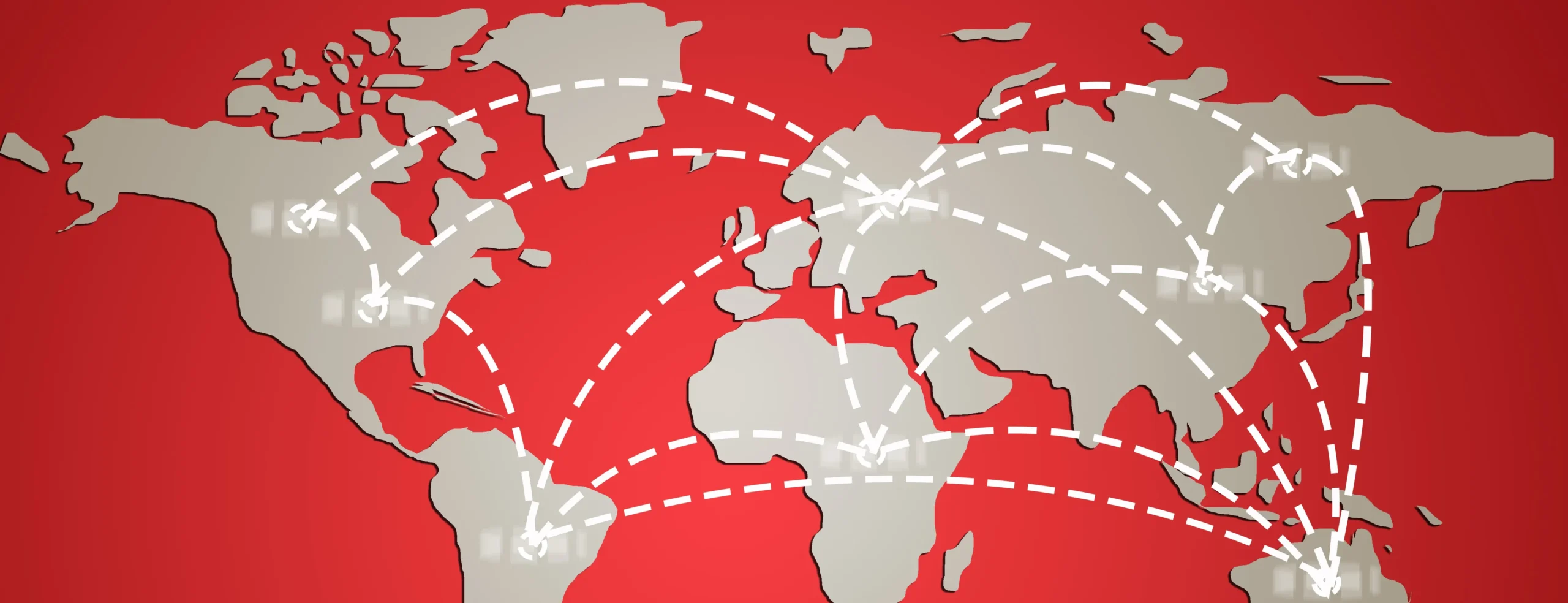The current state of the world economy can be linked in large part to global uncertainties, the escalating crisis in Ukraine, the volatility of commodity prices, tight monetary policy, and other factors. Nevertheless, the World Bank said in its most recent analysis on India's development that the country displayed more resilience to global shocks and better than anticipated quarterly growth figures. In recent years, India's economy has become one of the world’s most dynamic and fastest-growing, and it is now largely regarded as an emerging economic power. India's large and rising workforce, its massive domestic market, and a number of economic reforms and laws meant to encourage it are just a few of the factors that have contributed to the country’s economic success. India is now the fifth-largest economy in the world. India’s emergence requires the assessment of the factors and the signs that India is growing to be a significant global power and its implications.
Reforms Leading to Unpreceded Growth
India has experienced unprecedented growth in recent years, becoming one of the fastest-growing major economies in the world. A range of factors have contributed to this growth, including economic reforms, demographic factors, foreign investment, infrastructure development, government policies, and favorable external conditions.
India’s success has been largely attributed to the numerous economic changes that have been carried out over the past few decades. These changes have improved the business environment by promoting private investment and liberalizing the economy. Measures to lower trade barriers, modify the tax code, and privatize state-owned firms are only a few examples of reforms. The Indian government has put in place a number of policies designed to foster economic growth, such as programmes to encourage entrepreneurship, attract foreign investment, and make conducting business easier. Additionally, the government has started a number of notable initiatives with the goal of advancing manufacturing and digitization, including Startup India, Make in India, Digital India, and Skill India. Additionally, a number of sectors have considerably fueled India’s economic growth, with the services sector accounting for roughly 58% of the country’s GDP, as well as the manufacturing, agricultural, construction, and mining sectors.
Another key driver of India’s success has been the development of its infrastructure. India has made significant recent investments in infrastructure development, including the building of new roads, railroads, airports, and ports. This has made it simpler for businesses to run and for the exchange of products and services because it has improved connection and decreased transportation expenses. Further, foreign investment has been a crucial factor in India’s development. With a business-friendly environment, a sizable and expanding market, and a talented workforce, India has grown to be an increasingly attractive destination for foreign investment. Manufacturing, IT, and services are some of the sectors that have benefited from foreign investment-driven growth.
The demographic composition of India has been one of the main factors behind its economic success. India is anticipated to surpass China as the most populous country by the end of this year with a population of over 1.4 billion and a rapidly growing middle class. As a result, there is now a sizable and quickly expanding workforce, which will likely continue to fuel economic growth and development in the years to come.
A Rising Global Power
India’s emergence as a major global power is a complex phenomenon that is reflected in a variety of cultural, strategic, and economic aspects. India’s expanding role in regional and international politics as well as its growing significance as a catalyst for innovation and economic progress on a global scale is reflected by the following signs.
India’s rapid economic growth is one of the most notable signs of the country’s emergence as a major global power. According to the International Monetary Fund (IMF), India’s GDP growth rate for FY 2023–2024 is expected to be 6.1%, making it one of the world’s fastest-growing major economies in the recent years. India continues to be a bright spot in the global economy, according to the IMF president, who also said that India alone has the capacity to contribute 15% of global growth in 2023. It is anticipated that India’s economy would continue to expand quickly in the years to come, supported by a combination of local spending, foreign investment, and government initiatives intended to foster economic growth.
In addition, according to Morgan Stanley, India will drive a fifth of global growth in this decade, making it one of just three countries capable of generating annual output growth of more than $400 billion. After 2028, this figure will increase to more than $500 billion. Thanks to international trends and significant investments the country has made in technology and energy, India is on course to surpass Japan and Germany to become the third-largest economy in the world by 2027 and to have the third-largest stock market by 2030 where the Bombay Stock Exchange may increase by 11% annually, reaching a market cap of $10 trillion in the next ten years. By 2031, India’s GDP, which is currently $3.5 trillion, could more double to $7.5 trillion, and its export share might quadruple.
The establishment of strategic alliances between India and a number of powerful nations, such as the United States (US), Japan, and Russia, is another indicator of India’s emergence as a new significant world power. The India-Australia Economic Cooperation and Trade Agreement came into force on 29 December 2022, and the India-United Arab Emirates (UAE) Comprehensive Economic Partnership Agreement came into effect on May 2022. Within the next five years, they want to increase their bilateral trade to $50 billion and $100 billion, respectively. India is also now negotiating free trade agreements with the United Kingdom (UK), the European Union, Israel, and other countries. Furthermore, India’s Foreign Trade Policy (FTP) 2023 came into effect on the 1st of April, with an objective of $2 trillion in exports by 2030, it will be dynamic and responsive to consultative feedback, and it will enable rupee payments for foreign trade and internationalize domestic currency. These partnerships have helped to strengthen India’s position in the global system and increase its influence in regional and global affairs.
Another sign is the production relocating to India, in the most recent fiscal year, Apple Inc. tripled production in India, the world’s fastest-growing smartphone market, after speeding a move outside of China. Through increasing partners like Foxconn Technology Group and Pegatron Corp., the US corporation now manufactures roughly 7% of its iPhones in India. This is a substantial improvement for India, which produced an estimated 1% of the world’s iPhones in 2021. This shift in production is due to China Zero-Covid policy that locked the country for three years and disrupted the supply chains made countries seek for other alternatives like India and Indonesia. Moreover, India has been growing as a significant exporter ever since its goods exports reached a record high of $417.81 billion in FY 2022. According to government predictions, India will reach its $450 billion export goal in FY 2023.
India offers tremendous potential and opportunity as a centre for exports and as a place to engage in the manufacturing and services sectors. The goal of India’s most recent trade agreements is to incorporate the manufacturing industry into the global supply chain. As a result, FDI equity flows from Japan, Singapore, the UK, and the UAE have increased in a strong way in H1 FY2022-23. This represents an affirmation of India’s solid position as one of the most important investment destinations in the world as it has received $847 billion in FDI throughout the course of the last twenty-two years (April 2000 to March 2022), while the $523 billion were received during the course of the last eight years (April 2014 to March 2022) represents approximately 40% of the total FDI inflow over the same period. FDI inflow to India was only $ 45.15 billion in FY 2014–15; this figure rose to $ 60.22 billion in FY 2016–17; and finally, to the largest annual FDI inflow ever reported during the FY 2021–22, which was $83.57 billion. According to India’s Economic Survey Report 2023, the government’s initiatives, such as the establishment of the Single National-Window system and a one-stop shop for solutions for the approvals and clearances required by investors, entrepreneurs, and businesses, were responsible for the increase in FDI.
India’s expanding worldwide impact is also reflected in its soft power. India has a dynamic democracy and a rich cultural legacy, and it has been able to use this soft power to expand its influence in the world. The world loves Indian movies, music, and food, and Indian spiritual practices like yoga and meditation have become quite popular. Also, India will chair the Shanghai Cooperation Organization and welcome Eurasian leaders, possibly including Russia’s Vladimir Putin and China’s Xi Jinping, while it expands its cooperation with the West through “minilaterals” like the planned Quadrilateral Security Dialogue Leaders’ conference in Australia this May. India also intends to champion the voice of the Global South throughout the year while holding the G-20 presidency and hosting the organization’s summit in September, even though it is expected to be invited as a guest participant to the exclusive G-7 Summit in Japan once more. Hosting world leaders at the G-20 summit will confirm India’s growing significance, and brokering a significant agreement on urgent global issues will undoubtedly show its worldwide influence.
The opportunity to portray itself as a potential mediator between the West and Moscow is presented by this summit, and the diplomatic signals it sends will have influence both domestically and internationally. India now plays a bigger role in regional and international events as a result of its growing economic and political influence. India is anticipated to have a greater influence on the world economy and the balance of power as it continues to expand and develop.
Implications of Rising India
It is anticipated that India’s growing political and economic influence will have a big impact on the world economy in a number of ways and that India’s fast expanding economy will significantly contribute to global growth. India’s middle class and population are both expanding, and as a result, there will likely be more chances for businesses and exporters worldwide as global demand for goods and services rises. Further, India’s growing global impact is probably going to increase rivalry between India and other superpowers like China and the US. The outcome of this competition may have substantial effects on international trade, investment, and the distribution of power. India is poised to challenge other countries that have historically dominated certain sectors as it grows more competitive in areas like IT and manufacturing. This might result in more competition and pressure on those countries to innovate and adapt.
In addition, India has become a favorable destination for foreign investment due to its fast economic growth and liberalizing policies. There will be more opportunities for firms to invest in India and for Indian companies to invest overseas as India continues to open up to foreign investment. Also, the emergence of India as a significant economic superpower is a component of a larger West to East shift in the balance of power in the world. This change is probably going to have a big impact on the world’s power dynamics as well as the current political and economic system. India is anticipated to have a bigger impact on the development of international political and economic institutions as it grows in stature on the world arena.
Overall, the emergence of India as a big economic and political power is likely to have a considerable impact on the international economy and the balance of power. India’s continued growth and development will undoubtedly have both positive and negative effects on the world’s political and economic systems, but definitely many indicators show that India is fit to become the next global superpower.
References:
OECD. OECD Economic Surveys: India 2019. 2019 Dec 24 [cited 2023 Apr 15]; Available from: https://www.oecd-ilibrary.org/economics/oecd-economic-surveys-india-2019_554c1c22-en
India Transportation [Internet]. [cited 2023 Apr 15]. Available from: https://www.worldbank.org/en/news/feature/2011/09/23/india-transportation
Key facts about India’s growing population as it surpasses China’s population | Pew Research Center [Internet]. [cited 2023 Apr 15]. Available from: https://www.pewresearch.org/fact-tank/2023/02/09/key-facts-as-india-surpasses-china-as-the-worlds-most-populous-country/
IMF chief says India remains a “bright spot”, to contribute 15% of global growth in 2023 – BusinessToday [Internet]. [cited 2023 Apr 15]. Available from: https://www.businesstoday.in/latest/world/story/imf-chief-says-india-remains-a-bright-spot-to-contribute-15-of-global-growth-in-2023-371433-2023-02-25
India Economic Boom: 2031 Growth Outlook | Morgan Stanley [Internet]. [cited 2023 Apr 15]. Available from: https://www.morganstanley.com/ideas/investment-opportunities-in-india
India’s Top Partners: Trends and 2023 Outlook [Internet]. [cited 2023 Apr 15]. Available from: https://www.india-briefing.com/news/indias-leading-export-destinations-trends-and-2023-outlook-26862.html/
India’s Foreign Trade Policy 2023 in Effect from April 1: Key Changes [Internet]. [cited 2023 Apr 15]. Available from: https://www.india-briefing.com/news/indias-new-foreign-trade-policy-2023-in-effect-from-april-1-key-points-27582.html/
Apple India iPhone Output Soars to $7 Billion in China Shift – Bloomberg [Internet]. [cited 2023 Apr 15]. Available from: https://www.bloomberg.com/news/articles/2023-04-13/apple-triples-india-iphone-output-to-7-billion-in-china-shift
India’s Top Export Partners: Trends and 2023 Outlook [Internet]. [cited 2023 Apr 15]. Available from: https://www.india-briefing.com/news/indias-leading-export-destinations-trends-and-2023-outlook-26862.html/
India economic outlook | Deloitte Insights [Internet]. [cited 2023 Apr 15]. Available from: https://www2.deloitte.com/us/en/insights/economy/asia-pacific/india-economic-outlook.html
FDI in India: Foreign Direct Investment Policy of India | Invest India [Internet]. [cited 2023 Apr 15]. Available from: https://www.investindia.gov.in/foreign-direct-investment
Economic Survey 2023: India received the highest-ever FDI inflows of $ 84.8 bn in services in FY22 – Times of India [Internet]. [cited 2023 Apr 15]. Available from: https://timesofindia.indiatimes.com/business/budget/economic-survey-2023-india-received-the-highest-ever-fdi-inflows-of-84-8-bn-in-services-in-fy22/articleshow/97486681.cms?from=mdr
What to Watch in 2023: India’s Pivotal Year on the Global Stage | United States Institute of Peace [Internet]. [cited 2023 Apr 15]. Available from: https://www.usip.org/publications/2023/02/what-watch-2023-indias-pivotal-year-global-stage
Bussiére M, Mehl A. China’s and India’s roles in global trade and finance: Twin titans for the new millennium? 2008 [cited 2023 Apr 15]; Available from: http://www.ecb.europa.eu










Comments